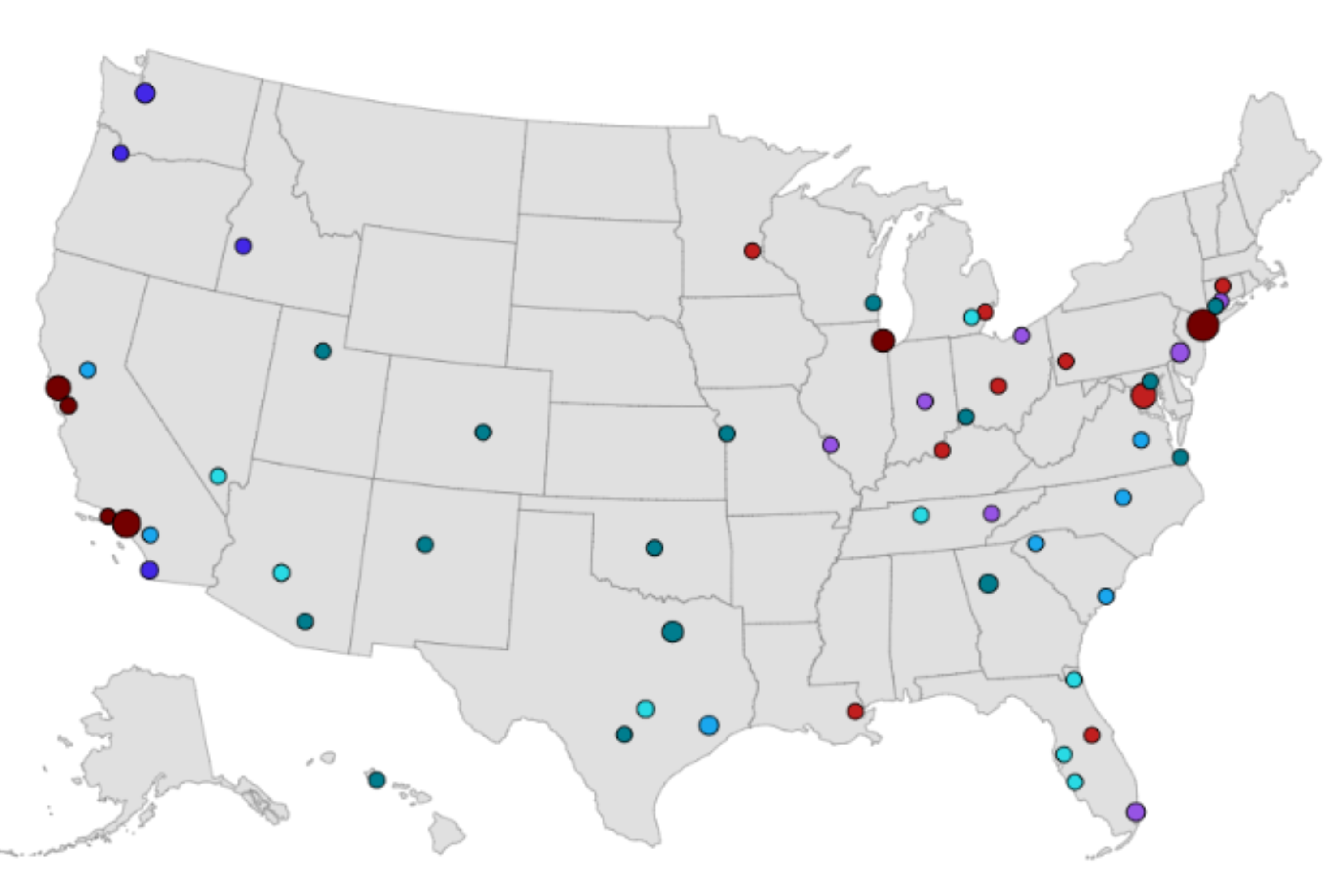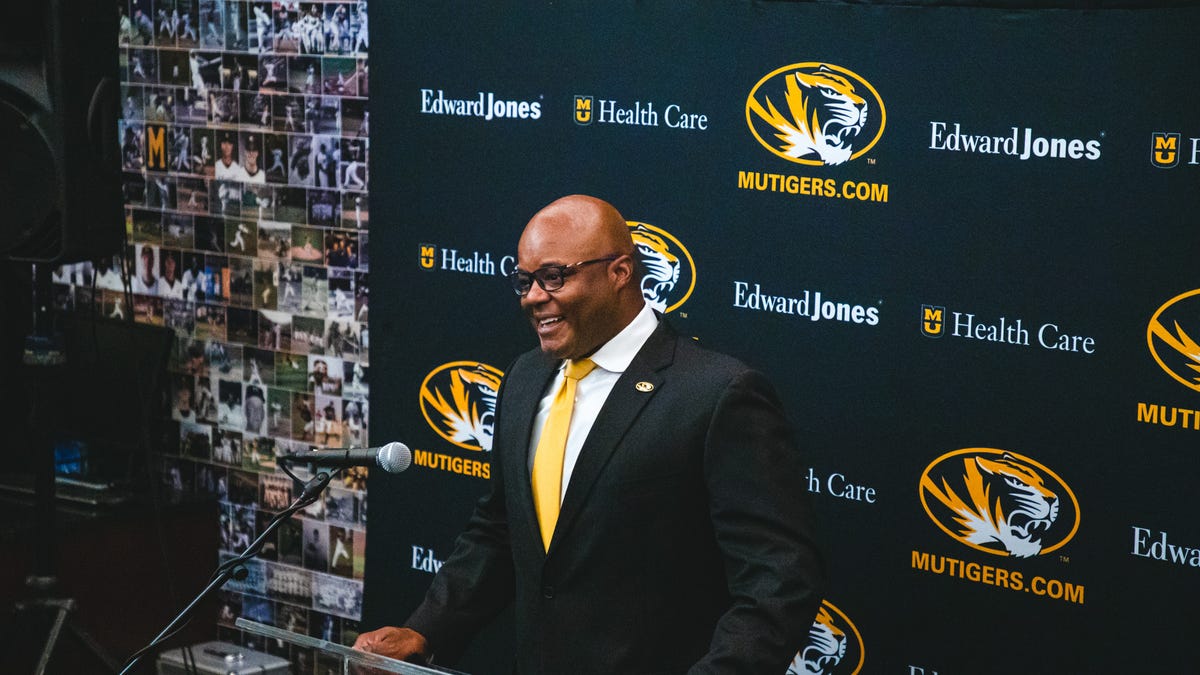New Hampshire
State universities admit more out-of-state students for the tuition bump – New Hampshire Bulletin

CORVALLIS, Ore. — Kennedy Cole, a college junior studying accounting, knew she wanted to attend school outside her native Nevada to expand her choices, meet new people, and explore different places.
Emma Nichols, a sophomore majoring in vocal performance, chose a school close to her home in Corvallis, Oregon.
The two friends, Oregon State University tour ambassadors who guide prospective students and families around campus, both think they made the right decision.
Cole said it was scary and tough to be at a school where many first-year students already knew one another or had gone to local high schools, but she found most students were friendly. Nichols said one of the exciting aspects of Oregon State’s campus is the ability to meet “out-of-state students and international ones from a different culture.”
But while they both have scholarships, there’s a big difference in their base tuition.
The university charges an estimated $13,800 in tuition and fees for in-state undergraduates in the 2023-24 academic year and about $36,600 for nonresidents.
At a time when school budgets are tightening and college enrollment is decreasing, state universities are increasingly turning to nonresident students to boost their revenues.
In 47 states, public research universities increased the proportion of out-of-state undergraduate students they admitted between 2002 and 2022, according to an analysis of federal education data done for Stateline by University of Wisconsin-Madison education professor Nicholas Hillman.
In those two decades, the percentage of out-of-state undergraduate students at those universities rose steadily from a nationwide average of 18 percent to 28 percent, Hillman found. Public research schools are generally large state universities that receive significant grants for research.
“Universities that have broad access missions have the least revenue stream,” Hillman said in an interview. Any shift in public funding “affects them more. Slots are being given away to people paying higher tuition. Politically, this is such a hot potato. Legislators are getting interested in this.”
While the funding boosts universities, critics worry that in-state students are being shut out. To minimize that, some states limit the number of out-of-state students.
Aaron Klein, a senior fellow at the Washington, D.C.-based Brookings Institution, a centrist think tank, wrote a report on out-of-state enrollment in 2022.
In an interview with Stateline, Klein said: “The ability to go to a high-quality school near where you grew up is being taken away for many kids through a complex process in which public universities are swapping in-state students for out-of-state. In the end, society is no better educated, and student debt rises substantially.”
In Oregon, the average percentage of undergraduate students from out of state rose from 23 percent to 47 percent at the state’s public research universities, according to Hillman’s analysis.
At Oregon State University, 63 percent of undergraduate students are nonresidents, according to Jon Boeckenstedt, vice provost of enrollment management, who has written extensively on the subject. The percentage drops to about half when including graduate students, he said. But Boeckenstedt also said virtually no Oregonian applicant who is qualified is denied a place at his campus. The university’s acceptance rate for first-year applicants in 2022-23 was nearly 83 percent, according to data provided by the school to the U.S. Department of Education.
“Up until about 2019 or 2020, we had sort of an informal, trustee-mandated ratio of two-thirds resident, one-third nonresident balance,” he said in an interview in his office on the lush Oregon State campus.
“But if you manage to that ratio, and resident enrollment falls by 100 [students], you need to purposely exclude out-of-state residents who want to come here and bring their out-of-state tuition dollars,” Boeckenstedt said. “And so I said, ‘Let’s think about this differently.’”
Shift toward out-of-state students
The trend toward admitting more out-of-state students started as far back as the 1980s, when state legislatures and governors began reducing funding for higher education, said Ozan Jaquette, an associate professor of higher education at the UCLA Graduate School of Education & Information Studies who has studied nonresident enrollment at public universities. He added that the trend has accelerated over the past decade.
“Once states said, ‘Hey, you can make your own money,’ the public universities that could, said, ‘We are going to dramatically increase nonresident enrollment because they pay higher tuition,’” he said.
Up until the end of the last decade, the move toward out-of-state recruitment mostly applied to flagship state universities, Jaquette said, as they had the widespread name recognition to attract students from other places. But now, he said, it has trickled down to the next tier of public colleges, as budgets get tighter and more nonresidents apply.
Some universities that recruit out-of-state students tend to focus on private high school students, since their families often can afford to pay higher tuition, he said. But some recruiting lately has expanded to public high schools, usually in affluent suburbs, or areas where there are few public state universities and pockets of affluent students all competing for the in-state slots. It’s easier, sometimes, to get in at a university in another state.
“The only viable route [to increase the budgets] is nonresident enrollment,” he said of schools with declining state funding. “If you are not Stanford or Princeton, there are limits to how much donation and endowment you have and there are limits to research funding.”
Some schools also recruit internationally.
Arizona State University spotlights the fact that it is the top public university choice for international students, according to an Institute of International Education’s Open Doors report. Nearly 18,000 international students studied at the school in the 2022-23 school year, according to Open Doors data. The research institution tracks U.S. students studying abroad and international students coming to the United States.
About two hours south at the University of Arizona in Tucson, current undergraduate enrollment is 50 percent students from the state, 45.2 percent from out of state and 4.5 percent international, for about a nearly even split between residents and nonresidents, Kasandra Urquidez, the school’s chief enrollment officer, wrote in an email.
While University of Arizona enrollment for undergraduate state residents dropped 4.6 percent over the last decade, from 19,206 to 18,323, nonresident undergraduates have risen 41 percent, from 10,244 to 14,478, according to figures provided by Urquidez. Arizona resident tuition for undergraduates is $13,200 and nonresident tuition is $39,600, she said.
“As a state university, non-resident enrollment … provides university revenue and decreased state funding causes the university to seek alternative forms of revenue,” she wrote in the email.
She added that Arizona does not limit spots for residents: “We are very dedicated to the citizens of our state and would never turn away a qualifying resident for a non-resident.”
Chanah Tanioka is a senior of Japanese descent from Hawaii studying pre-med at Oregon State University. She’s the first of her family to go to college and said she looked at public universities all over the country, but chose Oregon State because it felt more welcoming to someone of her heritage than some schools in the Midwest or Southeast.
She also had a close family friend who attended the school and now lives in nearby Salem. Tanioka has scholarships that make it possible for her to afford the steeper tuition and recommends that students from other places who want to attend a big public university check out its culture before going.
Tanioka belongs to the Hawai’i Club on campus, which helps make her feel at home. She said one jarring thing about going to school on the mainland is the lack of understanding of her native Hawaiian Pidgin vernacular, in which “Are you pau with your food?” means “Are you finished?”
Some states seek limits
While many public universities have embraced nonresident enrollment in recent years, some states have quotas or laws that are aimed at putting in-state residents first.
In North Carolina, five state schools — including the University of North Carolina-Chapel Hill and North Carolina State University — have an 18 percent cap. Seven have a 25 percent cap, two have a 35 percent cap, and one, Elizabeth City State University, has a 50 percent cap. Historically Black colleges and universities, known as HBCUs, and schools that had declining in-state enrollment were granted the higher caps.
In Texas, state law mandates that high school students graduating in the top 10 percent of their class (except the top 6% for the University of Texas at Austin applicants) are automatically admitted to any public Texas university.
That can effectively limit the number of non-Texas students at those schools. Out-of-state enrollment in Texas public universities grew only 1 percentage point over the past decade, from 6 percent to 7 percent, according to Hillman’s research.
The University of California Board of Regents, under pressure from state lawmakers alarmed at the high percentage of nonresident students attending California universities, in 2017 adopted a new policy to limit nonresident enrollment. The board settled on 18 percent at five campuses; on four other campuses that already had exceeded that percentage, enrollment would be capped at their 2017-2018 levels.
The legislature then worked to appropriate more money to make up for the revenue hit the California campuses would take by admitting fewer higher-paying nonresident students.
The deal directed $31 million in state funding to the universities in 2022-23, and grew to $61 million in 2023-24, and is expected to increase to $92 million in 2024-25, according to Justin Tran, spokesperson for California state Sen. John Laird, a Democrat and chair of the Senate Budget Subcommittee on Education, who was instrumental in the actions. That is aimed at reducing nonresident enrollment to 18% of the undergraduate student body, replacing about 900 nonresidents with Californians annually, Tran wrote in an email.
Oregon lawmakers also are concerned about the number of nonresident students attending state universities. State Rep. John Lively, a Democrat and chair of the House Committee on Higher Education, wrote in an email that the lower ratio of Oregon students to nonresidents is something that deserves a “hard look” to see what role cost plays in that calculation.
He also suggested that people from elsewhere who go to school in Oregon may enhance the state’s economy by staying after graduation to work.
“It’s also a goal of mine to attract new students and decrease the barrier that cost of higher education creates on individuals and families hoping to make a future here in Oregon,” he wrote.
This story was originally published by Stateline, which like the New Hampshire Bulletin is part of States Newsroom, a nonprofit news network supported by grants and a coalition of donors as a 501c(3) public charity.

New Hampshire
Legally required expense records still missing for several current, former NH officials | Manchester Ink Link

Story Produced by the Keene Sentinel, a Member of

The N.H. Attorney General’s Office is in charge of enforcing RSA 14-C, a state law requiring legislators to submit reports after organizations cover more than $50 of their expenses in attending political, charitable or ceremonial events.
An investigation by The Sentinel, published nearly a month ago, found several legislators attended expense-paid conservative conferences in Florida in recent years but didn’t have the required paperwork on file to show any air travel or accommodation benefits they received.
The Attorney General’s Office was non-committal this past Tuesday in response to questions on whether it is investigating potential violations of the statute or whether it has ever done so.
“The New Hampshire Department of Justice takes violations of State law seriously and proceeds with investigations and enforcement based on evidence,” Michael Garrity, the attorney general’s spokesman, said in an email.
“We work closely with the New Hampshire Secretary of State’s Office and the New Hampshire Department of Justice’s Public Integrity Unit would investigate alleged violations of the statute. We would not comment on any open matters, however we take appropriate action where we have evidence of violations of New Hampshire law.”
The N.H. Legislature passed RSA 14-C in 2016. The law spells out its purpose as minimizing inappropriate influence from organizations with an interest in matters pending before the Legislature.
Former Republican Rep. Edward Gordon of Bristol, chairman of the Legislative Ethics Committee, said in an interview last week that his panel is not looking into any potential violations of the law, which carries a misdemeanor penalty for those who knowingly fail to comply with its provisions.
“We are not a police force,” Gordon said. “We don’t go out looking for offenders. We would deal with it if somebody brought it to our attention in the form of a complaint. We would address it then.”
Nobody has filed such a complaint, he said.
The Sentinel reported on April 5 that Texas-based Young Americans for Liberty covered costs New Hampshire lawmakers incurred to attend its conferences in Florida, usually exceeding $1,000, per public records dating back to 2021. The organization spent at least $92,000 for Granite State legislators to attend these gatherings during this time, the records show.
Reasons current and former legislators offered for the missing records include failure to file, not understanding their legal requirements or forms getting lost in the mail.
After being questioned by the newspaper, some of them filed late reports for benefits received for these conferences: N.H. Reps. Juliet Harvey-Bolia, R-Tilton; Matthew Santonastaso, R-Rindge; Lisa Post, R-Lyndeborough; Rep. Tom Kaczynski Jr., R-Rochester; and former state Reps. Dawn Johnson, R-Laconia; Tim Baxter, R-Seabrook; and former state Sen. Gary Daniels, R-Milford.
Reports still were not on file on the N.H. Secretary of State’s website as of Friday for others who said they attended the Young Americans for Liberty’s 2021 conference, including former state Reps. Cody Belanger, R-Epping; Max Abramson, R-Seabrook; and William Foster, R-New Boston.
Last week, Abramson said he believed that he filed the report after the conference and hasn’t tried to refile it. Foster said he believes “that was filed but if you’re not seeing it, I’ll take a look at that.” Belanger also said he thought he filed it, but wasn’t sure what state office he sent it to.
Former state Rep. John Lewicke, R-Mason, said he also remembers attending one of the group’s conferences, but there’s no online record that he filed a report on any benefits received.
Online photos for the group’s 2022 conference show Rep. Erica Layon, R-Derry, in attendance, but there is no record she ever filed the required report for the gathering.
Layon did not return a call for comment last week but previously said she would make sure her report gets properly filed, adding that New Hampshire representatives have many deadlines and little help.
She went to the group’s 2021 gathering and filed a report with a list of the New Hampshire lawmakers who were planning to attend that year, including former Rep. Michael Yakubovich, R-Hooksett. He does not have any reports on file and did not return calls for comment.
Rick Green can be reached at rgreen@KeeneSentinel.com or 603-355-8567.

These articles are being shared by partners in The Granite State News Collaborative. For more information visit collaborativenh.org.
New Hampshire
Jury foreperson in New Hampshire youth center abuse trial 'devastated' that award could be slashed

CONCORD, N.H. — Attorneys for a New Hampshire man who prevailed in a landmark lawsuit over abuse at a state-run youth detention center are asking for a hearing after the jury foreperson expressed dismay that the $38 million award could be slashed to $475,000.
Jurors on Friday awarded $18 million in compensatory damages and $20 million in enhanced damages to David Meehan, who alleged that the state’s negligence allowed him to be repeatedly raped, beaten and held in solitary confinement as a teenager at the Youth Development Center in Manchester. But the attorney general’s office said the award would be reduced under a state law that allows claimants against the state to recover a maximum of $475,000 per incident.
“I’m so sorry. I’m absolutely devastated,” the jury foreperson wrote to attorney Rus Rilee on Friday evening, according to the hearing request filed Saturday.
Jurors were not told of the cap, but they were asked how many incidents it found Meehan had proven. They wrote “one,” but the completed form does not indicate whether they found a single instance of abuse or grouped all of Meehan’s allegations together.
“We had no idea,” the jury foreperson wrote. “Had we known that the settlement amount was to be on a per incident basis, I assure you, our outcome would have reflected it. I pray that Mr. Meehan realizes this and is made as whole as he can possibly be within a proper amount of time.”
After consulting with outside counsel with expertise in post-trial matters, Rilee and attorney David Vicinanzo requested that a hearing be held Monday. According to their request, Rilee did not see the email from the juror until Saturday and did not reply.
Meehan, 42, went to police in 2017 and sued the state three years later. Since then, 11 former state workers have been arrested and more than 1,100 other former residents of the Youth Development Center in Manchester have filed lawsuits alleging physical, sexual and emotional abuse spanning six decades.
Plaintiff David Meehan, center, leaves the courtroom with his attorney Rus Rilee, right, and victim specialist Joelle Wiggin during Meehan’s trial at Rockingham Superior Court in Brentwood, N.H., April 10, 2024. The jury found the state liable for abuse at its youth detention center and awarded the sum to Meehan, a former resident who says he was beaten and raped as a teen. Credit: AP/David Lane
Meehan’s lawsuit was the first to be filed and the first to go to trial. After four weeks of testimony, jurors returned a verdict in under three hours.
Over the course of the trial, Meehan’s attorneys accused the state of encouraging a culture of abuse marked by pervasive brutality, corruption and a code of silence. They called more than a dozen witnesses to the stand, including former staffers who said they faced resistance and even threats when they raised or investigated concerns, a former resident who described being gang-raped in a stairwell, and a teacher who said she spotted suspicious bruises on Meehan and half a dozen other boys.
The state argued it was not liable for the conduct of rogue employees and that Meehan waited too long to sue. Its witnesses included Meehan’s father, who answered “yes” when asked whether his son had “a reputation for untruthfulness.” Others who testified included a longtime youth center principal who said she saw no signs of abuse over four decades and a psychiatrist who diagnosed Meehan with bipolar disorder, not the post-traumatic stress disorder claimed by his side.
In cross-examining Meehan, attorneys for the state portrayed him as a violent child who continued to cause trouble at the youth center — and a delusional adult who is exaggerates or lies to get money. The approach highlighted an unusual dynamic in which the attorney general’s office is both defending the state against the civil lawsuits and prosecuting suspected perpetrators in the criminal cases.
New Hampshire
Mother’s Day 2024 Brunch: Where To Go Out In Hampton, North Hampton

HAMPTON, NH — Mother’s Day 2024 is approaching.
This year, the holiday dedicated to celebrating mom is Sunday, May 12. If you plan on treating her to brunch or dinner, now is the time to make reservations since they may fill up quickly in Hampton and North Hampton.
Here are a few options for dining out on Mother’s Day.
-

 News1 week ago
News1 week agoFirst cargo ship passes through new channel since Baltimore bridge collapse
-

 World1 week ago
World1 week agoHaiti Prime Minister Ariel Henry resigns, transitional council takes power
-

 Movie Reviews1 week ago
Movie Reviews1 week agoAbigail Movie Review: When pirouettes turn perilous
-

 World1 week ago
World1 week agoEU Parliament leaders recall term's highs and lows at last sitting
-

 Politics1 week ago
Politics1 week ago911 call transcript details Democratic Minnesota state senator’s alleged burglary at stepmother's home
-

 Science1 week ago
Science1 week agoOpinion: America's 'big glass' dominance hangs on the fate of two powerful new telescopes
-

 Politics1 week ago
Politics1 week agoGOP lawmakers demand major donors pull funding from Columbia over 'antisemitic incidents'
-

 World1 week ago
World1 week agoHamas ‘serious’ about captives’ release but not without Gaza ceasefire



















